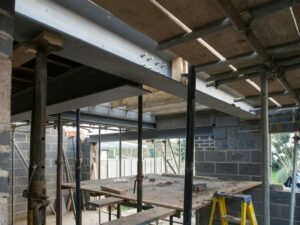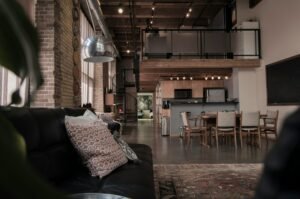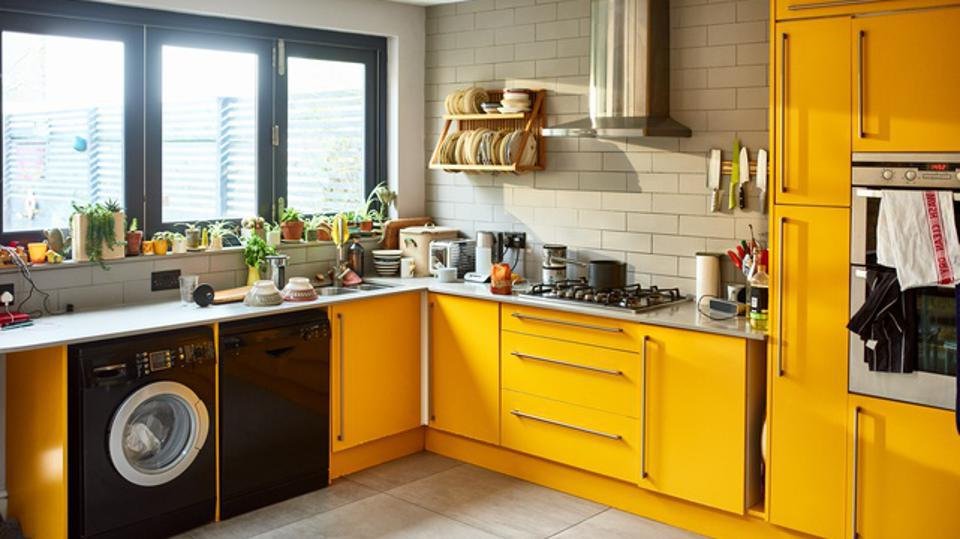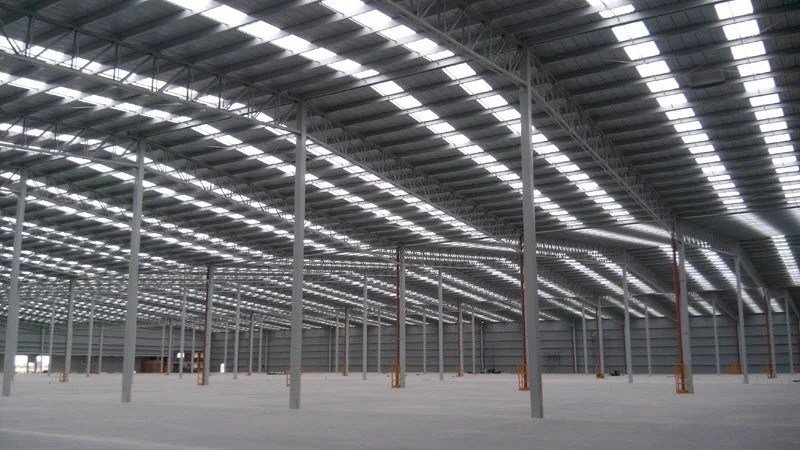The Role of Virtual Reality in Pre-Construction Planning and Design
In the fast-paced world of construction, where precision and foresight are paramount, leveraging technological advancements has become a cornerstone for success. One such advancement that has revolutionized the industry is virtual reality (VR). VR technology offers a dynamic platform that allows stakeholders to immerse themselves in a three-dimensional digital environment, providing unparalleled insights into pre-construction planning and design processes.

Visualization and Immersion
One of the most significant advantages of VR in pre-construction planning and design is its ability to provide stakeholders with a realistic and immersive experience. Traditional two-dimensional blueprints and renderings can often fall short in conveying the true scale and spatial relationships within a building project. VR bridges this gap by enabling users to step inside a virtual representation of the proposed structure.
Architects, engineers, developers, and clients can walk through virtual spaces, experiencing firsthand how different design elements interact and influence the overall aesthetic and functionality. This immersive experience fosters better communication and understanding among project team members, resulting in more informed decision-making during the planning stages.
Design Iteration and Collaboration
VR facilitates iterative design processes by allowing stakeholders to explore various design options in a virtual environment quickly. Designers can make real-time modifications to the layout, materials, and finishes, instantly visualizing the impact of these changes on the overall design. This iterative approach streamlines the decision-making process, as stakeholders can collaboratively evaluate different design alternatives and select the most suitable option.
Furthermore, VR enhances collaboration among multidisciplinary teams by breaking down communication barriers. Architects, engineers, interior designers, and contractors can all contribute their expertise within the virtual environment, fostering a more integrated and cohesive approach to pre-construction planning and design. By aligning stakeholders’ vision and expectations early in the process, VR helps minimize the risk of costly design errors and rework during construction.
Risk Mitigation and Conflict Resolution
Identifying potential conflicts and mitigating risks is essential to the success of any construction project. VR enables stakeholders to proactively identify and address design conflicts before they escalate into costly issues during construction. By simulating construction sequences and workflows within the virtual environment, project teams can assess constructability challenges and logistical constraints, optimizing project sequencing and resource allocation.
Moreover, VR can simulate various environmental conditions, such as lighting, acoustics, and thermal performance, allowing designers to evaluate the building’s performance under different scenarios. This predictive analysis helps identify design flaws or performance gaps early in the process, enabling corrective measures to be implemented before construction commences. By mitigating risks and resolving conflicts upfront, VR contributes to smoother project execution and enhanced project outcomes.
Client Engagement and Stakeholder Buy-In
Effective communication and stakeholder engagement are critical for project success. VR enhances client engagement by offering a tangible and interactive platform for presenting design concepts and proposals. Clients can virtually explore their future space, providing valuable feedback and insights to refine the design to better align with their vision and requirements.
Furthermore, VR facilitates stakeholder buy-in by fostering a sense of ownership and involvement in the design process. Clients, end-users, and other project stakeholders feel more connected to the project when they can actively participate in the design review process within the virtual environment. This collaborative approach cultivates trust and transparency among project stakeholders, ultimately leading to greater satisfaction and success upon project completion.
In conclusion, virtual reality plays a pivotal role in pre-construction planning and design by offering a powerful platform for visualization, collaboration, risk mitigation, and stakeholder engagement. By leveraging VR technology, project teams can make more informed decisions, streamline design processes, mitigate risks, and enhance stakeholder satisfaction. As VR continues to evolve and become more accessible, its integration into the construction industry will undoubtedly become increasingly ubiquitous, shaping the future of how buildings are conceived, designed, and built.
How to Choose the Right Contractor for Your Construction Project
Choosing the right contractor for your construction project is a crucial decision that can significantly impact the outcome of your endeavor. Whether you’re embarking on a home renovation, building a new house, or undertaking a commercial construction project, finding a reliable and competent contractor is essential for success. In this guide, we’ll walk you through the steps to ensure you select the right contractor for your needs.

Define Your Project Needs and Budget
Before you start searching for a contractor, it’s essential to have a clear understanding of your project requirements and budget. Determine the scope of work, timeline, and specific details you expect from the contractor. This includes materials, finishes, and any special requirements. Additionally, establish a realistic budget for your project to ensure you can afford the services of the contractor you choose.
Research Potential Contractors
Once you’ve outlined your project needs, it’s time to research potential contractors. Start by asking for recommendations from friends, family, or colleagues who have recently completed similar construction projects. You can also check online reviews and ratings on platforms like Yelp, Google, or Angie’s List to get an idea of contractors’ reputations in your area.
Check Credentials and Experience
When evaluating contractors, it’s essential to verify their credentials and experience. Look for contractors who are licensed, bonded, and insured in your state. This ensures they meet the necessary legal requirements and have the financial protection to cover any accidents or damages that may occur during the project.
Additionally, inquire about the contractor’s experience in handling projects similar to yours. Ask for references or examples of past work to gauge their expertise and quality of craftsmanship. A contractor with a proven track record of success in projects similar to yours is more likely to deliver satisfactory results.
Interview Multiple Contractors
Don’t settle for the first contractor you come across. Instead, interview multiple contractors to compare their services, pricing, and communication styles. During the interviews, pay attention to how the contractors communicate and whether they listen to your needs and concerns. Clear and open communication is essential for a successful working relationship throughout the construction process.
Request Detailed Estimates
Once you’ve narrowed down your options, request detailed estimates from the remaining contractors. A thorough estimate should outline the scope of work, materials, labor costs, timeline, and any other relevant expenses. Avoid contractors who provide vague or incomplete estimates, as this may indicate a lack of transparency or potential for hidden costs down the line.
Review Contracts Carefully
Before hiring a contractor, review the contract carefully to ensure it includes all the necessary details and protections for both parties. The contract should outline the scope of work, payment schedule, timeline, warranties, and dispute resolution procedures. If there are any ambiguities or concerns, don’t hesitate to seek clarification or negotiate modifications before signing the contract.
Verify Insurance and Permits
Before work begins, verify that the contractor has obtained all necessary permits for your project and carries adequate insurance coverage. This includes general liability insurance and workers’ compensation insurance to protect against any accidents or injuries that may occur on the job site. Failure to obtain proper permits or insurance can result in delays, fines, or legal liabilities for both you and the contractor.
Monitor Progress and Communication
Throughout the construction process, maintain open communication with your contractor and regularly monitor progress to ensure the project stays on track. Address any concerns or issues promptly to avoid misunderstandings or delays. A reputable contractor will prioritize transparency and keep you informed of any developments or changes to the project.
Evaluate Performance and Provide Feedback
Once the construction project is complete, take the time to evaluate the contractor’s performance and provide feedback. Assess whether they met your expectations in terms of quality, timeliness, and communication. If there are any areas for improvement or unresolved issues, communicate them constructively with the contractor to ensure future projects benefit from your feedback.
Maintain a Positive Relationship
Building a positive relationship with your contractor is key to a successful construction project. Treat them with respect, communicate openly and honestly, and address any concerns or conflicts professionally. A collaborative and respectful working relationship fosters trust and ensures a smoother construction process from start to finish.
In conclusion, choosing the right contractor for your construction project requires careful research, thorough evaluation, and clear communication. By following these steps and selecting a contractor who aligns with your needs, budget, and expectations, you can ensure a successful outcome and a satisfying construction experience.
How to Choose the Right Architectural Service for Your Project
In the realm of construction and design, choosing the right architectural service for your project can be the difference between a successful endeavor and one fraught with challenges. Whether you’re embarking on a residential build, a commercial development, or a renovation project, the expertise and guidance of an architect are invaluable. However, not all architectural services are created equal, and finding the right fit requires careful consideration and research. In this guide, we’ll explore the key factors to consider when selecting an architectural service for your project.

Define Your Project Needs and Goals
Before you start searching for architectural services, it’s essential to have a clear understanding of your project’s requirements and objectives. Consider factors such as the project’s scope, budget, timeline, and desired outcome. Are you looking for a modern design aesthetic, sustainable solutions, or historical preservation expertise? Understanding your needs will help you narrow down your options and find a firm that aligns with your vision.
Evaluate Experience and Expertise
When choosing an architectural service, experience matters. Look for firms with a proven track record of success in projects similar to yours. Explore their portfolio to assess the diversity and quality of their work. Pay attention to the complexity of projects they’ve handled, their design approach, and their ability to meet client requirements. Additionally, inquire about their expertise in relevant areas such as zoning regulations, building codes, and sustainable design practices.
Assess Credentials and Licensing
Ensure that the architectural service you’re considering is properly licensed and accredited. Architects must adhere to strict regulations and standards to practice legally. Verify their credentials and affiliations with professional organizations such as the American Institute of Architects (AIA) or the Royal Institute of British Architects (RIBA). These affiliations demonstrate a commitment to excellence and ongoing professional development.
Evaluate Communication and Collaboration
Effective communication and collaboration are essential for a successful partnership between clients and architects. Assess how responsive and accessible the architectural service is during the initial consultation phase. Do they listen attentively to your ideas and concerns? Are they transparent about their processes, timelines, and fees? Look for a firm that values open communication and fosters a collaborative working relationship.
Consider Design Philosophy and Style
Every architectural firm has its unique design philosophy and style. Take the time to familiarize yourself with their aesthetic sensibilities and design approach. Do their previous projects resonate with your taste and vision? Are they flexible enough to adapt their style to suit your preferences? While it’s essential to appreciate their design ethos, also ensure that they can translate your ideas into a cohesive architectural vision.
Evaluate Project Management Capabilities
Effective project management is crucial for keeping your project on track and within budget. Inquire about the architectural service’s project management capabilities, including their ability to handle scheduling, procurement, and contractor coordination. Ask about their experience with construction administration and their strategies for mitigating potential risks and challenges throughout the project lifecycle.
Review Client Testimonials and References
Client testimonials and references provide valuable insights into the architectural service’s reputation and client satisfaction levels. Request references from past clients and take the time to contact them to inquire about their experience working with the firm. Ask about the firm’s professionalism, creativity, problem-solving abilities, and overall satisfaction with the project outcome.
Consider Budget and Fees
While cost shouldn’t be the sole determining factor, it’s essential to consider your budget when choosing an architectural service. Discuss your budget constraints upfront and inquire about the firm’s fee structure and payment schedule. Be wary of firms that provide overly low estimates or ambiguous pricing, as this could indicate potential hidden costs or compromises in quality.
In conclusion, selecting the right architectural service for your project requires careful consideration of various factors, including experience, expertise, communication, design philosophy, project management capabilities, client testimonials, and budget considerations. By conducting thorough research and due diligence, you can find a trusted partner who will bring your architectural vision to life with creativity, professionalism, and integrity.
Locksmith Designs for the Future: Predicting Security Trends
In an era defined by rapid technological advancements, the field of locksmithing is undergoing a transformative evolution. Traditional locks and keys are giving way to innovative security solutions that leverage cutting-edge technologies. As we peer into the future, it becomes evident that locksmith designs will play a pivotal role in shaping the security landscape. Let’s explore the key trends and predictions that are set to redefine locksmith designs for the future.

Biometric Integration and Authentication
One of the most prominent trends in future locksmith designs revolves around the integration of biometric authentication. Biometrics, such as fingerprint and retina scans, offer a level of security that surpasses traditional key and lock systems. Imagine a world where your unique biological features grant access to your home or office, eliminating the risk of lost or stolen keys. Locksmiths are increasingly exploring ways to seamlessly incorporate biometric technology into their designs, ensuring both convenience and heightened security.
Smart Locks and IoT Connectivity
The rise of the Internet of Things (IoT) is ushering in a new era of interconnected devices, and smart locks are at the forefront of this revolution. Future locksmith designs will likely focus on creating locks that can be controlled remotely through smartphones or other IoT-enabled devices. This connectivity not only enhances convenience but also allows for real-time monitoring and management of security systems. Expect locksmiths to explore innovative ways to integrate smart locks into the broader IoT ecosystem, creating a comprehensive approach to home and business security.
Artificial Intelligence in Security Systems
Artificial Intelligence (AI) is poised to become a game-changer in the field of locksmithing. Locksmith designs of the future may leverage AI algorithms to analyze patterns, detect anomalies, and adapt to evolving security threats. Intelligent lock systems could learn user behaviors, enhancing predictive capabilities and providing a more proactive approach to security. This incorporation of AI is not just about reacting to security breaches but about preventing them in the first place.
Blockchain for Unhackable Security
As concerns about cybersecurity continue to grow, locksmith designs may turn to blockchain technology for enhanced protection against hacking and unauthorized access. Blockchain’s decentralized and tamper-resistant nature could make it an ideal solution for securing digital keys and access logs. This trend could revolutionize how locksmiths approach the design of digital security systems, providing a level of trust and transparency that was previously challenging to achieve.
Augmented Reality for Enhanced User Experience
The integration of augmented reality (AR) into locksmith designs could redefine the user experience. Imagine visualizing your security system in real-time through AR glasses or a smartphone app. Locksmiths may design interactive interfaces that allow users to troubleshoot issues, customize security settings, and receive real-time notifications. AR has the potential to make security systems more user-friendly and accessible, contributing to a seamless integration of technology into our daily lives.
Environmental Sustainability in Locksmith Designs
Future locksmith designs are not only about advanced technology but also about environmental sustainability. Locksmiths may prioritize eco-friendly materials and manufacturing processes, ensuring that security solutions have a minimal impact on the environment. From biodegradable key materials to energy-efficient electronic locks, the locksmithing industry may take significant strides towards creating security solutions that are both technologically advanced and environmentally conscious.
Multi-Factor Authentication for Enhanced Security Layers
Building on the biometric authentication trend, future locksmith designs may incorporate multi-factor authentication to add additional layers of security. This could include a combination of biometrics, PIN codes, and proximity-based authentication. By combining multiple authentication factors, locksmiths can create robust security systems that are more resistant to unauthorized access.
Robotic and Drone Security Solutions
The future of locksmithing might see the introduction of robotic and drone-based security solutions. Locksmith designs could involve the creation of autonomous drones that patrol and monitor premises, or robotic devices capable of responding to security breaches. These innovations would not replace traditional locks but rather complement them, offering a dynamic and responsive security infrastructure.
As we gaze into the future, the world of locksmithing appears poised for a technological revolution. Biometrics, AI, blockchain, and other cutting-edge technologies are set to redefine how we approach security. Locksmiths, as the architects of these security systems, will play a crucial role in shaping designs that prioritize both innovation and reliability. The evolution of locksmith designs for the future is not just about locks and keys; it’s about creating a safer, smarter, and more connected world.
Enhancing Business Security: Commercial Locksmith Solutions and Innovative Designs
In the fast-paced world of business, security is a paramount concern. Protecting valuable assets, sensitive information, and ensuring the safety of employees are top priorities for any commercial establishment. In this landscape, locksmiths play a crucial role in developing innovative designs and solutions to address the unique security needs of businesses. In this article, we will explore the realm of commercial locksmith solutions, focusing on the latest designs that cater to the specific security requirements of businesses.

The Landscape of Commercial Security
Commercial establishments, ranging from small businesses to large enterprises, demand a comprehensive approach to security. This involves safeguarding physical assets, securing sensitive data, and ensuring the safety of employees and clients. Traditional lock and key systems, while still relevant, are being complemented and, in some cases, replaced by advanced locksmith designs that offer enhanced security features and convenience.
Access Control Systems
One of the key innovations in commercial locksmith solutions is the widespread adoption of access control systems. These systems go beyond the limitations of traditional lock and key mechanisms by providing businesses with the ability to control and monitor access to different areas within the premises.
Access control systems often utilize key cards, key fobs, or biometric authentication methods, such as fingerprint or retina scans. This not only enhances security by limiting access to authorized personnel but also offers a detailed audit trail, allowing businesses to track entry and exit times. In the event of a security breach, this information can be invaluable for investigations.
Master Key Systems
Master key systems have long been a staple in commercial locksmith solutions, offering businesses a convenient way to manage access to multiple areas with different levels of authorization. These systems involve the use of a single key that can open multiple locks, each with its own unique key. This hierarchy of keys allows designated personnel to access specific areas while providing a master key holder access to all locks.
The advantage of master key systems lies in their flexibility and scalability. As businesses grow and evolve, the master key system can be adapted to accommodate changes in access requirements without the need for extensive lock replacements.
High-Security Locks
For businesses dealing with high-value assets or sensitive information, high-security locks are a necessity. These locks are designed to resist tampering, picking, and other forced entry methods. They often incorporate advanced materials and precision engineering to provide an added layer of protection.
In addition to their robust construction, high-security locks may feature complex key systems, such as those with intricate keyway designs or electronic components for added encryption. Locksmiths specializing in commercial security can recommend and install high-security locks tailored to the specific needs of the business.
Electronic Keypad Locks
Electronic keypad locks offer a convenient and secure alternative to traditional lock and key systems. These locks use a keypad for code entry, eliminating the need for physical keys. Businesses can assign unique codes to employees, contractors, or other authorized individuals, and easily change these codes as needed.
The advantage of electronic keypad locks lies in their simplicity and adaptability. Businesses can easily manage access by changing codes or revoking access without the need for physical key replacements. Additionally, these locks often come with features such as time-based access restrictions, further enhancing security.
Biometric Security Solutions
As technology continues to advance, biometric security solutions are becoming increasingly prevalent in commercial locksmith designs. Biometric access control systems utilize unique physical or behavioral characteristics, such as fingerprints, retina scans, or facial recognition, to verify and grant access.
Biometric systems provide a high level of security, as the authentication is tied to an individual’s unique biological traits. This eliminates concerns about lost or stolen access credentials. While the initial investment in biometric systems may be higher, the long-term security benefits often outweigh the costs for businesses requiring a robust security infrastructure.
Integrating Technology for Comprehensive Security
In the modern business landscape, security is not confined to physical locks and keys alone. Commercial locksmiths are now integrating technology into their solutions to provide businesses with comprehensive security systems. This includes the integration of access control systems with video surveillance, alarms, and other security measures.
For example, when an access control system detects unauthorized entry, it can trigger an alarm and simultaneously activate surveillance cameras to record the event. This integration allows businesses to respond quickly to security incidents and provides valuable evidence for investigations.
Consultation and Customization
A key aspect of commercial locksmith solutions is the consultation process. Experienced locksmiths work closely with businesses to understand their unique security needs and challenges. This collaboration ensures that the chosen locksmith designs align with the specific requirements of the commercial establishment.
Customization is a hallmark of effective commercial locksmith solutions. Locksmiths can tailor their designs to accommodate the layout of the premises, the nature of the business, and any specialized security concerns. This personalized approach enhances the effectiveness of the security system and provides businesses with peace of mind.
In conclusion, commercial locksmith solutions have evolved significantly to meet the dynamic security needs of businesses. From access control systems and master key setups to high-security locks and biometric solutions, businesses now have a wide range of innovative designs to choose from. As technology continues to advance, the integration of electronic and biometric elements into traditional locksmithing further enhances the security landscape.
For businesses seeking to fortify their security measures, consulting with a reputable commercial locksmith is essential. These professionals can assess the unique requirements of a business and recommend and implement tailored locksmith designs that provide robust security without compromising on convenience. By staying abreast of the latest trends and innovations in commercial locksmithing, businesses can ensure the safety of their assets, data, and personnel in an ever-changing security landscape.
Kitchen Design That’s Ideal For Entertaining
Whether you are planning on entertaining guests at your home or just enjoying a family dinner at your house, it’s important to have a kitchen design that is functional and comfortable. You want to be able to entertain guests without having to worry about them getting bored. There are many factors to consider when designing your kitchen.
Open concept design
Having an open-concept kitchen design can be a good way to create a large, inviting space for family and friends. It allows for easy communication and interaction between the kitchen and living areas. However, there are a few tips you should keep in mind to maximize the benefits of having an open-concept layout.
A great lighting scheme can help create distinct zones in an open-plan space. For example, a bright kitchen island can help break up a bland open-concept design. In addition, an adjacent wall can serve as extra prep space or storage.
The most obvious benefit of an open-concept kitchen design is that it’s easier to entertain friends and family. It also helps to make a small space feel larger.

Wet bar
Whether you’re preparing for a family dinner, a holiday party, or a backyard barbecue, the design of your kitchen can be optimized to suit your entertaining needs. Using smart design principles can give you plenty of room to work, move around and collaborate.
A great focal point for your entertaining kitchen is a kitchen island. This provides additional prep space, storage, and seating. If you plan to entertain guests, this is a great place to put out a buffet or spread out a variety of foods.
You’ll want to make sure that your kitchen island has plenty of room to move around and is free of clutter. It’s also important that you don’t place the island in the middle of the room, as it can create a claustrophobic space that will hinder guests’ movement and discourage them from staying for longer.
Banquette seating
Having banquette seating in your kitchen can make it a place where family and friends can gather for lunch or dinner. It can also serve as a gathering spot for breakfast and afternoon tea. Whether you have an island, a double-sided fireplace, or open shelving, you can build a banquette to fit your needs.
A banquette seating area can be tucked under a window or along one wall. You may also choose a design that incorporates a dining table. In addition to providing additional seating, this style can be a great way to add storage to your kitchen.
Some people may prefer a banquette over a breakfast bar because they can be more comfortable. These seating areas can also be moved around to accommodate a buffet.
Long-lasting materials
Choosing long-lasting materials in a kitchen designed for entertaining may seem like an oxymoron. But, a well-thought-out design will pay off in the long run. Having a well-laid-out kitchen means plenty of storage and enough counter space for cooking, entertaining, and cleaning. Having an efficient layout will also ensure that your utility bills are kept in check.
If you’re tasked with deciding on which kitchen design to implement, a no-brainer is to stick to a neutral color palette. The kitchen is the heart of the home so choose colors that can easily be coordinated with other interiors in the home. This also means that the countertop and backsplash can be made from the same materials.
It is no secret that kitchens take a beating, so long-lasting materials are the name of the game. For this reason, choosing the right materials for your kitchen may require some sticker shock. The best way to avoid it is to invest in quality rather than quantity.
Work triangle
Whether you are redesigning your kitchen for a new house or just want to make your current one more functional, it is important to take into account how you want to use it. If you entertain guests, you may want to consider a kitchen that is designed with entertaining in mind. This means more open space, additional work areas, and a kitchen layout that accommodates entertaining.
One of the most common layouts for a kitchen is the U-shaped kitchen. This provides generous counter space, but can also make the cook feel like he or she is isolated when entertaining. You can also design a kitchen with a peninsula island or half wall to open up the kitchen.
Another kitchen layout that can help you design an efficient kitchen work area is the triangle layout. This is a layout that has been around for quite some time. However, it has been modified over the years to reflect changes in kitchen use.
How to Benefit From the Light When Planning a Building
During the planning process of a building, you will want to know how to benefit from the light and maximize the effect of natural daylight in planning a building. Natural light is essential for energy efficiency in a building, so plan your building accordingly so that every regularly occupied room and living space has access to windows, skylights, and other sources of natural light.
Maximize the effect of daylight on a building
Optimal design can be achieved by maximizing the effect of daylight in planning a building. This can be accomplished with a combination of features and techniques. Besides, daylighting is an ideal way to reduce energy use in buildings.
A building with an appropriately sized footprint is the best way to optimize the effect of daylight. One of the best approaches is to maximize the area of the south and north facades. A low-rise building with a large floor plate can also take advantage of an open-air courtyard or atria.
A narrow floor plate is also an efficient way to maximize the area of the exterior walls. A floor depth of 60 feet to the north and south has been shown to be a good bet. The same holds true for elongated floor plates and curved surfaces. In general, a low-rise building offers a greater number of shape and size options than a tall tower.
The best way to go about optimizing the effect of daylight in planning a building is to incorporate a few tricks into your design. For instance, it might be best to position your work surfaces away from the south facade to reduce the need for large solar shading devices. It also might be a good idea to incorporate a slender truss or curtain to allow for a larger area for daylighting.

Plan a building in such a way that every regularly occupied space and living rooms have access to the windows, skylights, and other sources of natural light.
Architects should consider how to plan a building such that all regularly occupied spaces and living rooms have access to windows, skylights, and other sources of natural light. The benefits of daylighting are well-documented. Light improves productivity, physical health, and occupant well-being. In addition, daylighting helps to reduce energy use and the environmental impact of the built environment.
The most effective means of admitting daylight into a building is through windows. Architects should design buildings to maximize the south and north exposures. In some cases, the placement of windows and other daylighting features may be difficult to retrofit.
External shading systems are also used to reduce glare inside a building. These systems vary by climate and location. The systems usually include horizontal or vertical elements that protect windows and transparent openings.
Light tubes, also known as tubular daylighting devices, are often used to direct sunlight into a building. These devices are similar to ceiling light fixtures but use a highly reflective tube to channel sunlight into a focused area. Although this device does not allow as much heat transfer as skylights, it is an effective means of admitting light into a room.
Hybrid solar lighting is another means of harnessing natural light. Hybrid solar lighting uses roof-mounted light collectors to collect sunlight and then uses large-diameter optical fiber to transmit light into a building.
Design for optimum energy efficiency
Optimum energy efficiency is a good way to cut energy costs and greenhouse gas emissions. While you may not be able to design a building that will meet every energy efficiency standard, there are ways to design for efficiency.
There are several ways to increase energy efficiency, including proper construction, insulation, and window selection. These methods help you save money, improve indoor environmental quality and improve occupant comfort.
A well-insulated building envelope is a key to new construction. It helps prevent heat loss and improves building operating efficiencies. It is also important to ensure that windows and doors are properly sealed. It’s not uncommon for buildings to lose energy through leaky walls, doors, and windows.
The best way to design for optimum energy efficiency is to take a holistic approach. This includes selecting the best materials for the climate in which you’re building. Materials that have a high thermal mass are ideal for cold climates. Opaque and translucent insulating materials are good examples.
In warm climates, window selection is also important. Large windows can raise indoor air circulation and minimize the need for artificial lighting.
The best way to design a building’s energy efficiency is to consider how people use the building. For example, you might install low-flow water fixtures to save your clients money on water bills. Another example is using a ceiling fan to distribute air more efficiently.